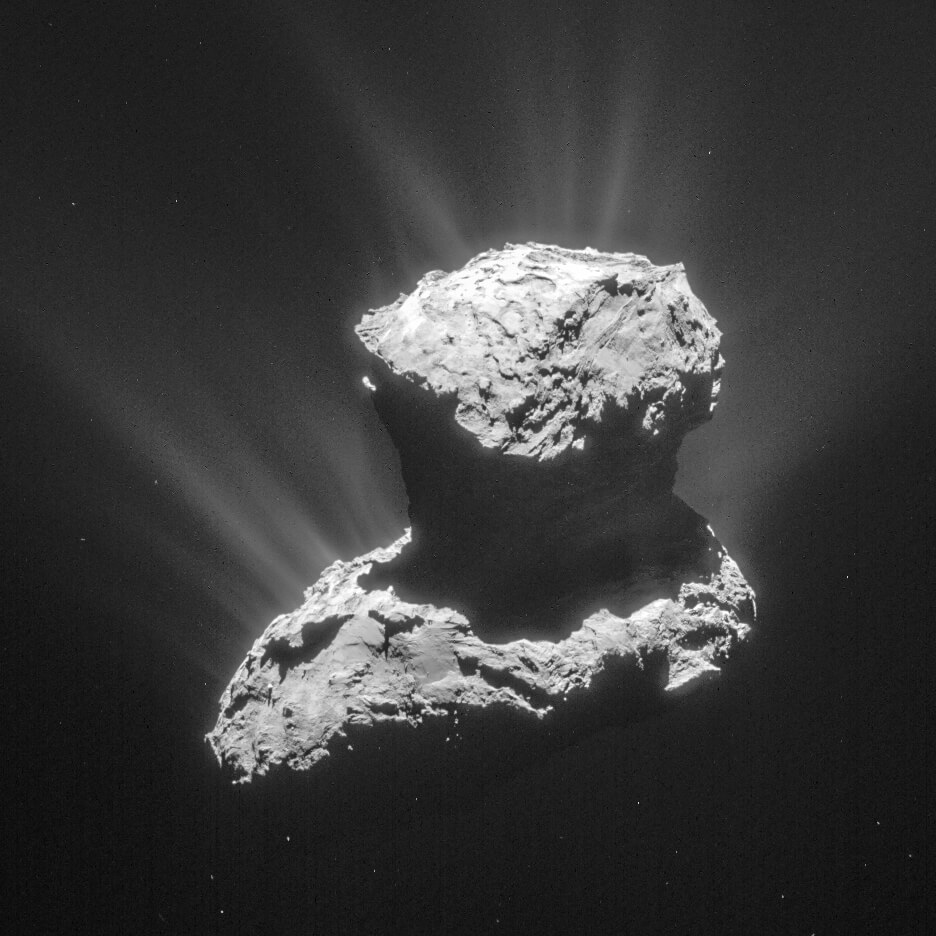

こちらは南天の「けんびきょう座」の一角を捉えた画像です。注目は、中央のオレンジ色に見える天体。これは、2021年9月に検出されたガンマ線バースト「GRB 210905A」にともなう残光(アフターグロー)です。
ガンマ線バースト(GRB:gamma-ray burst)とは、短い時間で爆発的に放出されたガンマ線が観測される突発的な現象です。ガンマ線バーストは継続時間で区別されていて、2秒より短いものはショートガンマ線バースト、2秒より長いものはロングガンマ線バーストと呼ばれています。GRB 210905Aはロングガンマ線バーストでした。ガンマ線バーストの起源は超新星爆発や中性子星どうしの合体ではないかと考えられていますが、まだ完全には理解されていません。
この画像は、ヨーロッパ南天天文台(ESO)が運営するチリのパラナル天文台にある「超大型望遠鏡(VLT)」の観測装置「X-Shooter」を使って取得された画像(可視光線と近赤外線のフィルター合計3種類)をもとに作成されました。人の目には捉えられない近赤外線のデータも含まれているため、画像の色は波長に応じて青・緑・赤で着色されています。ESOによると、ガンマ線の閃光に続く残光は可視光線や赤外線で観測できるものの、急速に暗くなって見えなくなってしまうため、天文学者は迅速に観測を行わなければなりません。
イタリア国立天体物理学研究所(INAF)のAndrea Rossiさんを筆頭とする研究チームは、GRB 210905Aに関する研究成果を発表しました。Rossiさんによると、GRB 210905Aは宇宙が誕生してから8億8000万年後、つまり今から約130億年前に発生したガンマ線バーストだったことがわかりました。これほど古い時代(赤方偏移zが6よりも大きい)に起きたガンマ線バーストは、GRB 210905Aを含めても、過去16年間で10例しか検出されていないといいます。
研究チームによると、GRB 210905Aでは非常に多くのエネルギーが放出されており、ブラックホールやマグネター(※)に落下した物質が原因となった可能性が考えられるようです。また、GRB 210905Aは初期の宇宙で起きたものの、その特性はより最近の時代に起きたガンマ線バーストに似ているといいます。
※…マグネター:高速で自転する中性子星の一種で、典型的な中性子星と比べて最大1000倍も強力な磁場を持つとされる。
2022年から科学観測を開始した「ジェイムズ・ウェッブ」宇宙望遠鏡や、ESOが建設を進めている「欧州超大型望遠鏡(ELT)」など将来の大型望遠鏡を使った観測によって、謎めいたガンマ線バーストの起源に迫ることが期待されています。冒頭の画像は、ESOから2022年10月3日付で公開されました。
関連:132億光年先まで測定可能? ガンマ線バーストが遠方宇宙の距離測定に利用できる可能性
Source
- Image Credit: ESO/A. Rossi et al.
- ESO - A blast from the past
- Media INAF - Un Grb eccezionale ma sotto sotto anche normale
- Rossi et al. - A blast from the infant Universe: The very high-z GRB 210905A
文/松村武宏

























